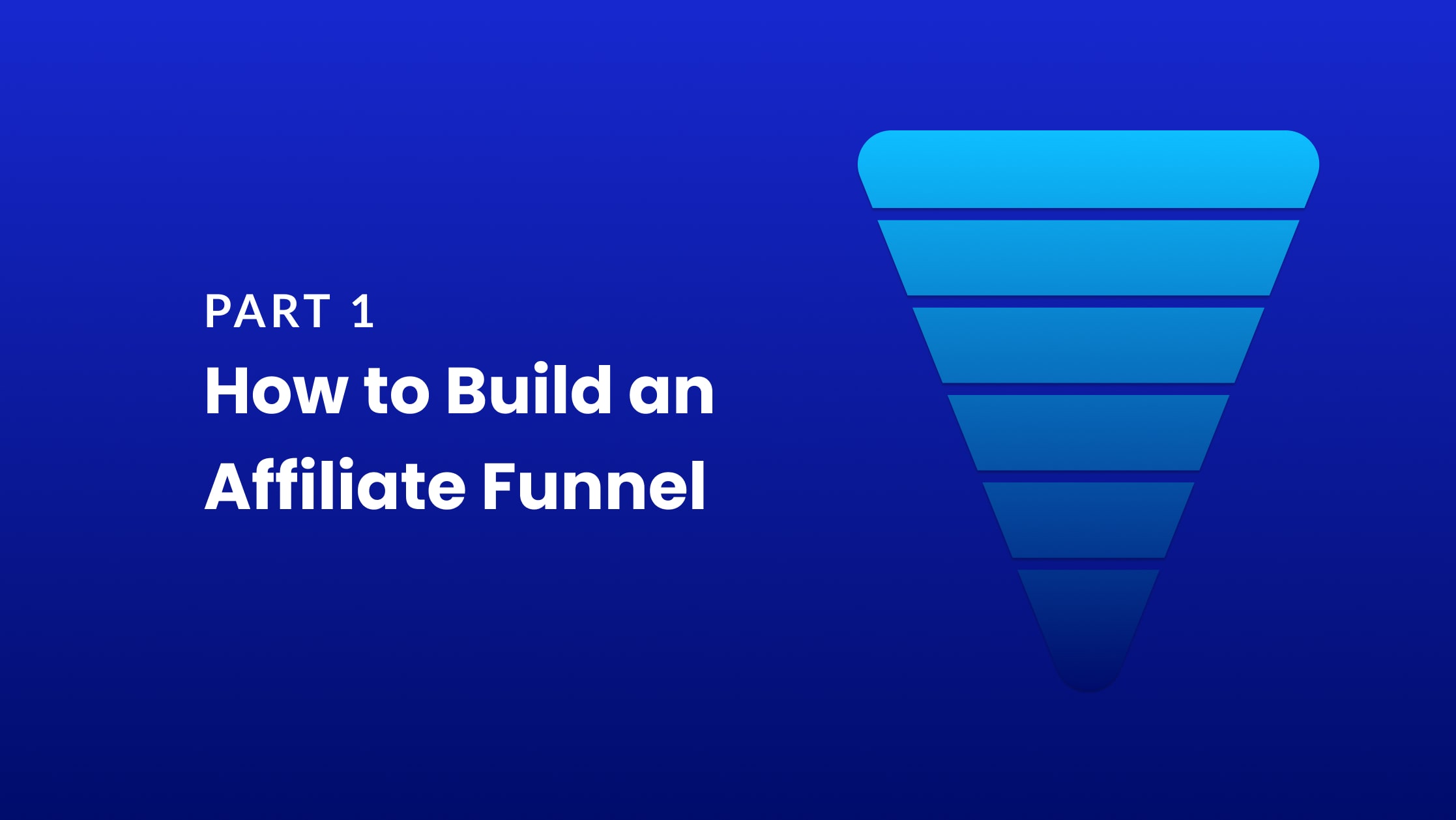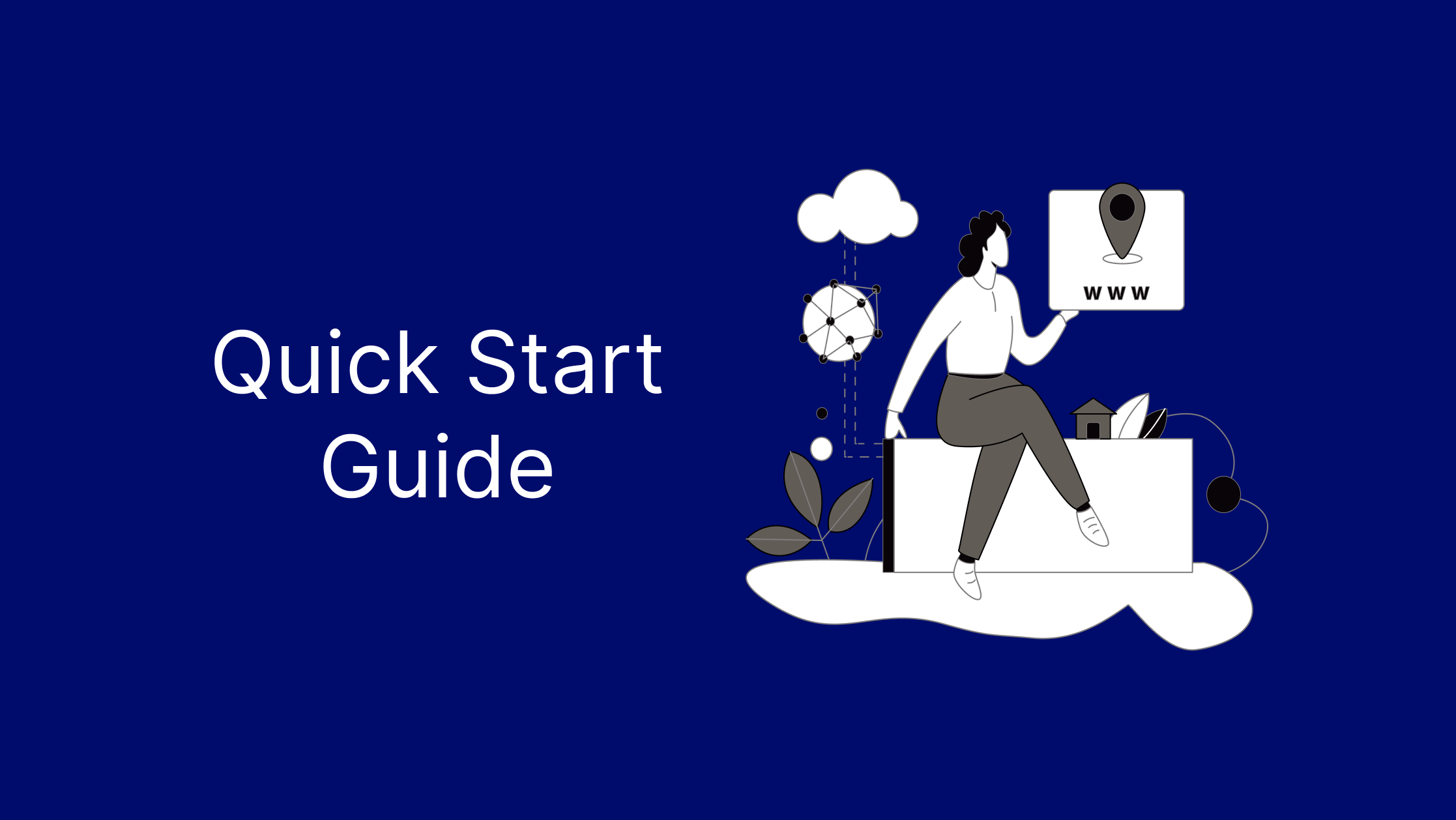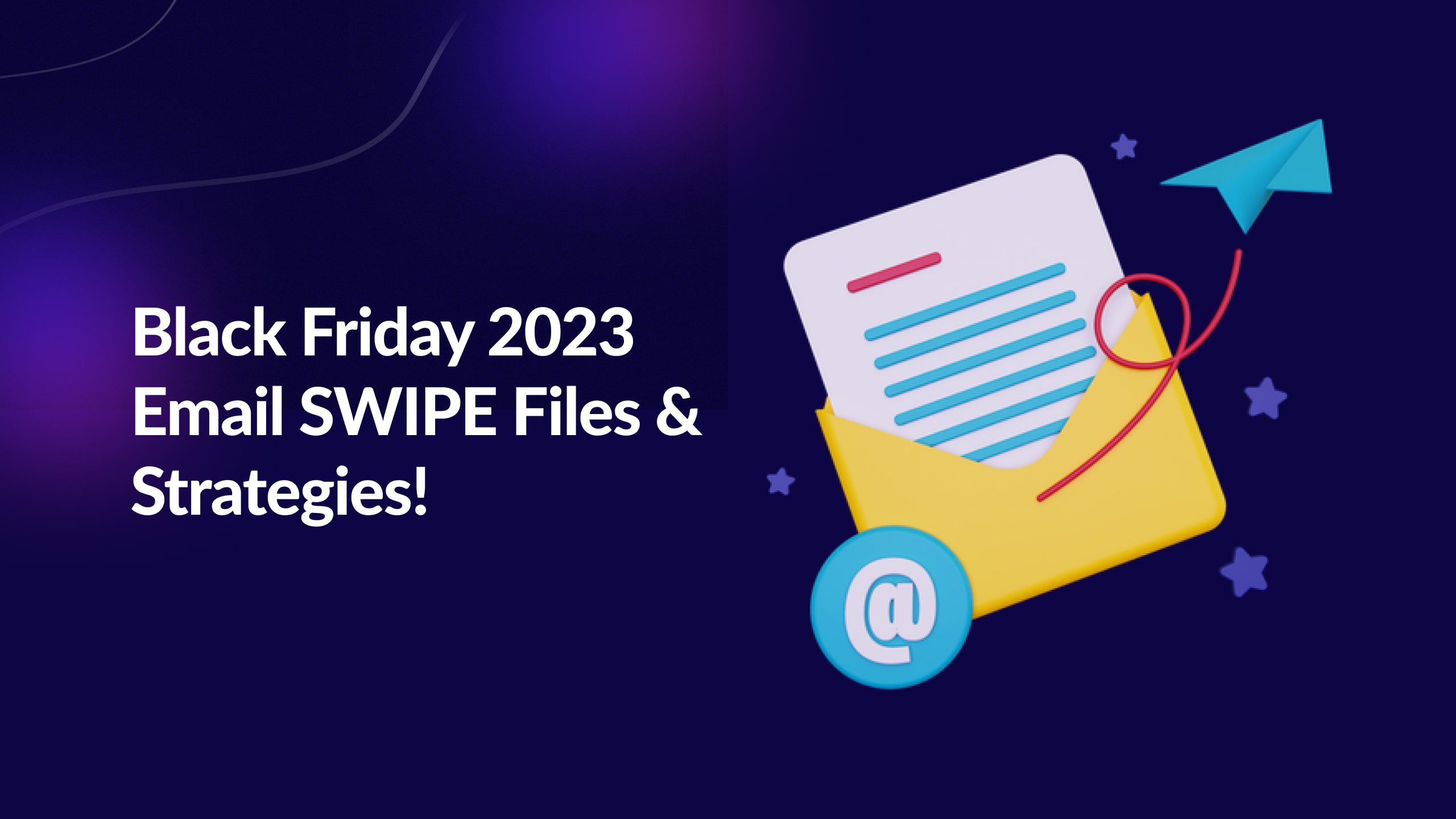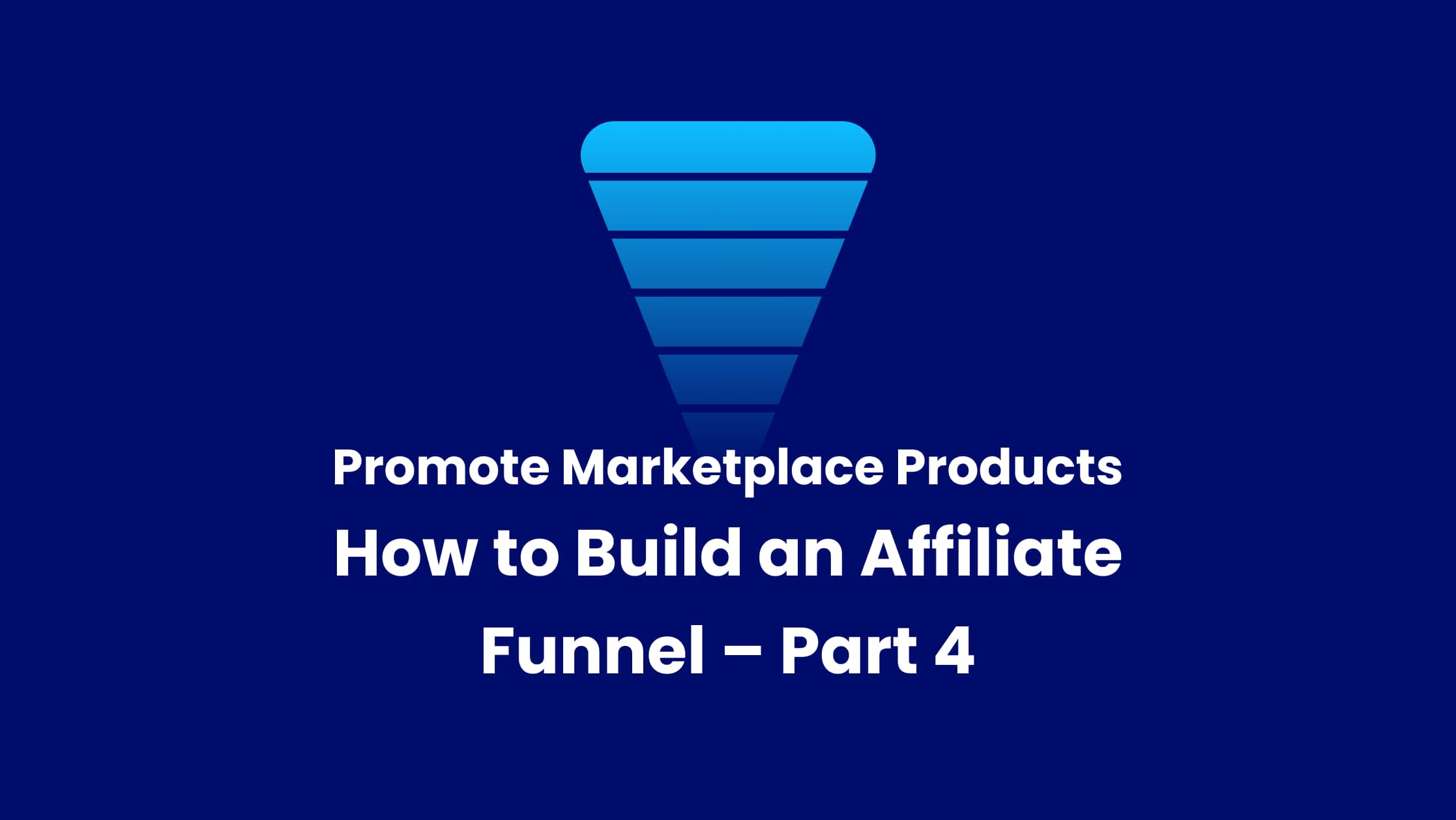In this post, I’ll share with you a blueprint to systematically create an affiliate funnel that converts visitors into customers and builds your email list simultaneously.
Affiliate marketing is one of the easiest online businesses to have. However, sometimes it can be a bit confusing to start. What are you supposed to do to become a successful affiliate? How do you launch a campaign? Do you use content marketing, or do you run ads instead? What emails should you send, and what should you say in them?
Moreover, how do you connect all your marketing efforts to convince your audience not just to buy the product you’re promoting but also to buy it using your affiliate link?
This blog post is the first in the affiliate funnel series where you’ll learn a step-by-step strategy you can follow to create a successful affiliate marketing business around Divi, Divi Cloud, and the Divi Marketplace.
You’ll also learn to stand out from the crowd by building an affiliate brand that people love, trust, and are loyal to. By the end, you should:
- Understand crucial marketing concepts
- Have your landing pages
- Have your lead magnets
- Written your welcome email
- Written your engagement emails where you promote Divi
What Makes a Good Affiliate Funnel
A funnel is a multi-step campaign that moves prospects toward a desired action. That action can be acquiring them as a lead in your email list or having them become customers.
Most affiliates, when getting started, do one of three things:
- Publish a blog post and expect it to generate revenue, or
- Build an email list and send a few emails trying to convince the user to buy the product they’re recommending, or
- Create an ad and drive traffic to the affiliate offer directly.
There is nothing wrong with any of the above, as in this series, we’ll implement the same strategies but with one significant difference: approach.
A good funnel has a strategy you can track, optimize and scale over time. This strategy should focus on what action you’d like users to take, in how much time, with the least friction possible between the prospect and the conversion (the action you’d like your leads/prospects to take).
The Customer Journey
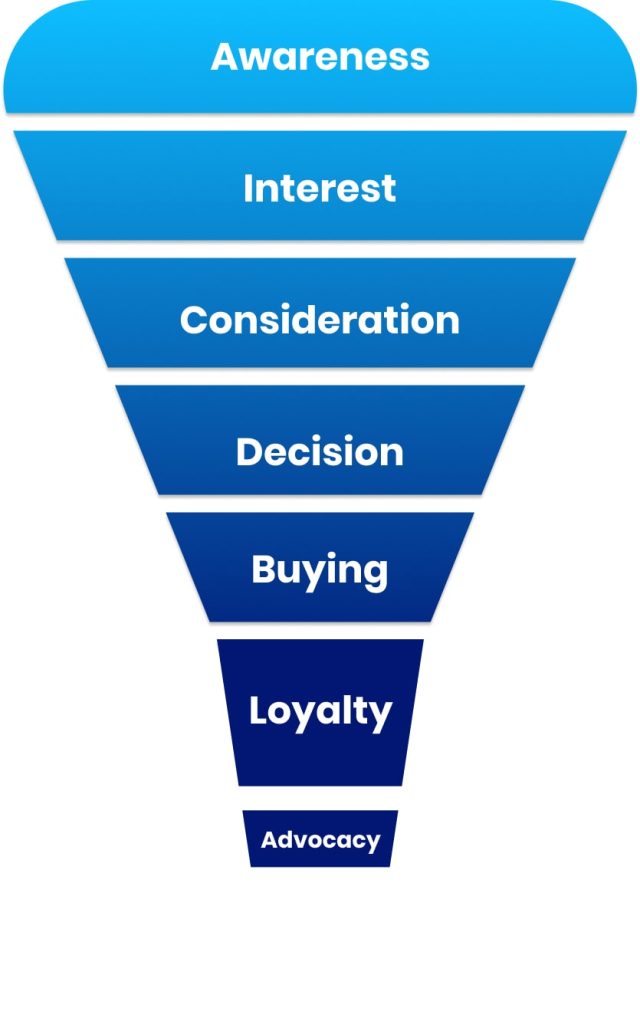
Even though there is no one-size-fits-all model, the customer journey is the steps customers take when buying a product or a service. For the sake of tailoring this guide toward affiliate marketing, we’ll divide the customer journey into five stages:
- Awareness
- Interest
- Consideration
- Decision
- Buying
After the buying stage, there are two more stages that some businesses like to add:
- Loyalty
- Advocacy
Let’s start by understanding what each term means.
Awareness
Awareness is the first stage in the customer journey because it’s where people first become aware of their problem or solution, service, or product.
There are two awareness segments:
- Problem awareness: knowing they have a problem that needs solving.
- Product/Brand awareness: knowing your brand or the product you’re promoting
Problem awareness is when your prospect becomes aware they have a problem. This is a really good stage to try to acquire those people as leads in your list to eventually market to them the solutions you promote as an affiliate.
Interest
At the “Interest” stage, the prospect is actively looking for solutions to their problems and ways to achieve their goals. They’ll think about the problem they’re trying to solve and conduct competitive research to ensure your offering is the best solution.
Consideration
This third stage is when your prospects start to consider “solutions” to their problem from the previous step. This stage is where your advice and recommendations come in as an affiliate and make the most impact.
Decision & Buying
The fourth and fifth stages of the affiliate sales funnel are when the prospect makes the decision to purchase the product you’re recommending and, later on, convert into a customer by buying that product.
Loyalty and Advocacy
These two stages are when you move that customer from just another “affiliate sale” into a loyal customer to your brand, so they become loyal to you and eventually promote you.
Here is where you stand to make the most income as an affiliate with Elegant Themes. Our affiliate program offers recurring commissions on Divi and Divi Cloud and has over 1300 products you could promote from the Divi marketplace.
Before discussing how to use the customer journey in your affiliate strategy, let’s look at the different funnel types we’ll build throughout this guide.
The Funnel Types You Should Have
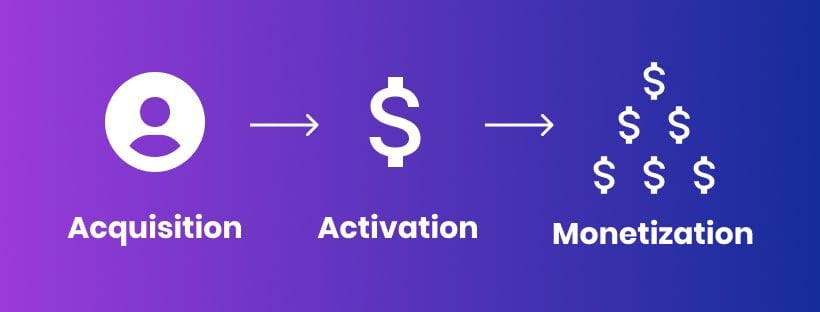
There are three funnel types you need in place to make the most out of the customer journey, and they are:
- Acquisition funnels
- Activation funnels
- Monetization funnels
Those funnel types target different stages of the customer journey. Each is a stand-alone funnel that, when stacked together, creates the ultimate affiliate marketing funnel that can convert prospects into customers on autopilot.
Acquisition Funnels
The acquisition funnel aims to convert your website’s visitors into email leads. They’re often called lead generation funnels and are the easiest to create because they require very few components to function effectively.
Activation funnels
Activation funnels convert prospects from leads to customers by buying through your affiliate link. These funnels usually take a little longer to prepare and require more testing and tweaking, but their success translates into higher affiliate revenue.
The goal of your activation funnels will be to have your leads become Elegant Themes members.
Monetization funnels
Monetization funnels target the last two stages of the customer journey (loyalty and advocacy) and are the funnels where you’ll be promoting Divi Cloud and Divi Marketplace‘s products as an Elegant Themes affiliate. These funnels focus heavily on providing value and nurturing your leads through different campaigns.
Read DigitalMarketer’s guide on conversion funnels if you’d like to better learn about funnels overall.
What’s Next
Now that you understand the customer journey and the different types of funnels, it’s time to implement them. In the next post, you’ll build your first acquisition funnel from scratch to start growing your lead base.

